Abstract
Mazur, Peter (Oak Ridge National Laboratory, Oak Ridge, Tenn.). Manifestations of injury in yeast cells exposed to subzero temperatures. II. Changes in specific gravity and in the concentration and quantity of cell solids. J. Bacteriol. 82:673–684. 1961.—It has previously been established that subjecting cells of Saccharomyces cerevisiae to rapid cooling to −30 C results in cell death and in certain morphological alterations. The alterations consisted of the loss of the central vacuole and a 50% decrease in volume. The present experiments were concerned with determining whether the volume decrease was the result of the loss of water alone or of water plus cellular solutes. The density of the “frozenthawed” cells was found to increase from 1.14 to 1.25 g/cm3 on the basis of measurements of the sedimentation rate of the cells. Interferometric and refractometric measurements indicated, furthermore, that the concentration of cell solids increased from 20 to 28%, whereas the total mass of cell solids decreased from 25 to 17 μμg/cell. The decrease in cell volume was thus shown to be the result of loss of solution from the cells, a solution containing 11 to 16% solids. Measurements of the rate of dialysis suggested that most or all of these solids had a molecular weight below 600. The findings are consistent with the view that low-temperature exposure destroyed the vacuolar membrane and sufficiently damaged the permeability barriers of the cell to permit escape of low molecular weight compounds. The damage was present a few seconds after thawing, and may, therefore, have been a direct result of intracellular ice crystals which, on the basis of previous studies, are believed to be responsible for death from low-temperature exposure.
Full text
PDF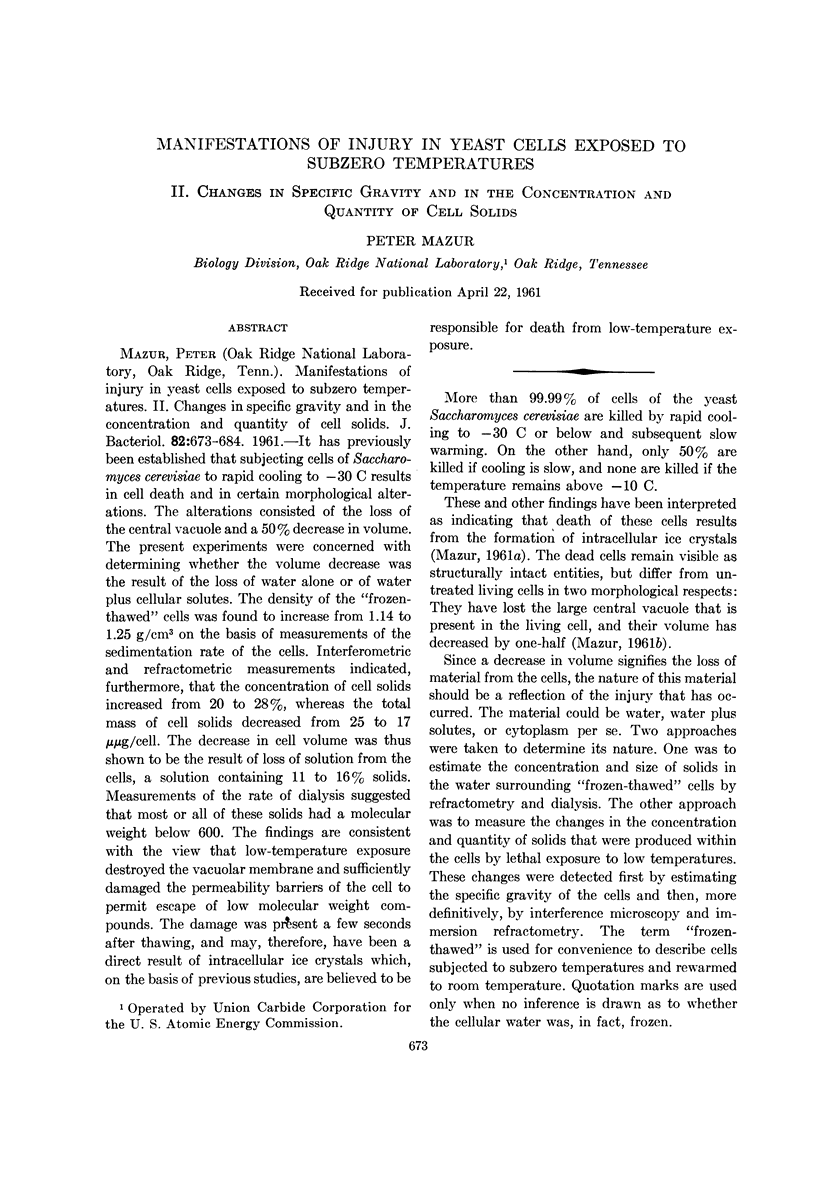
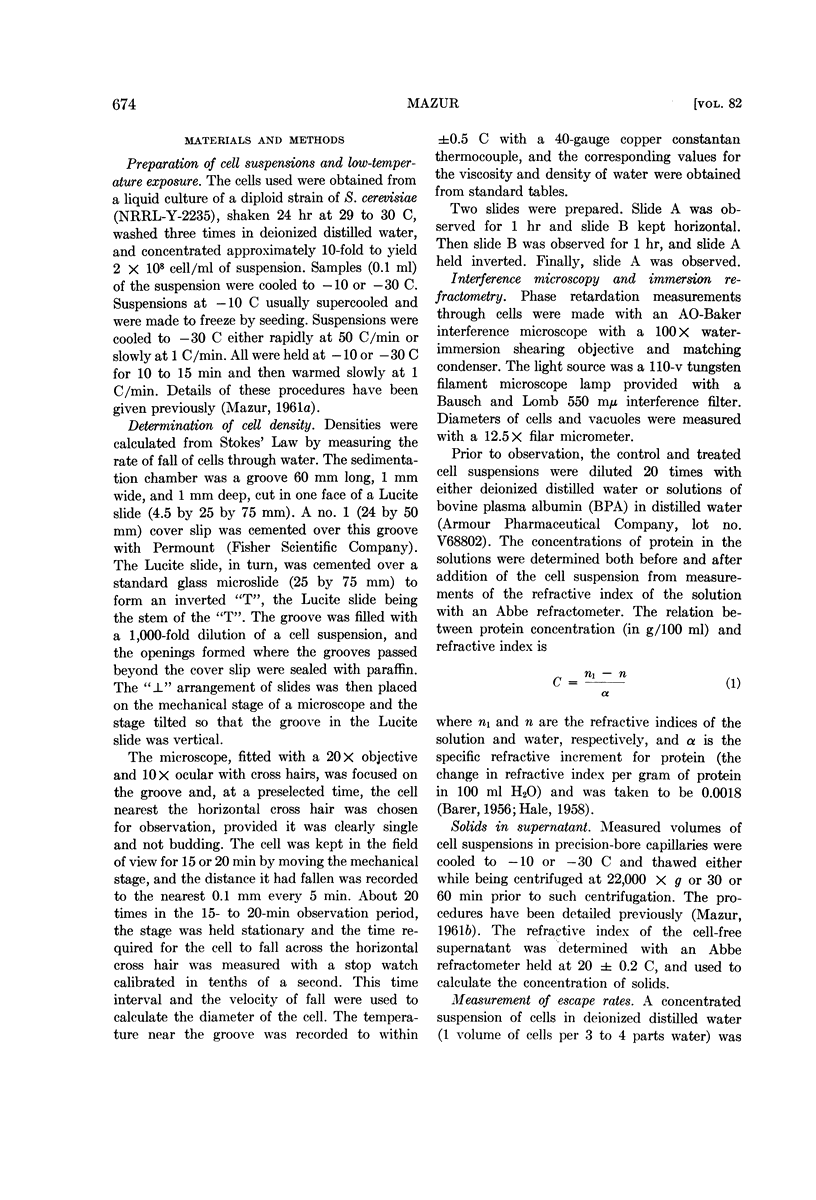
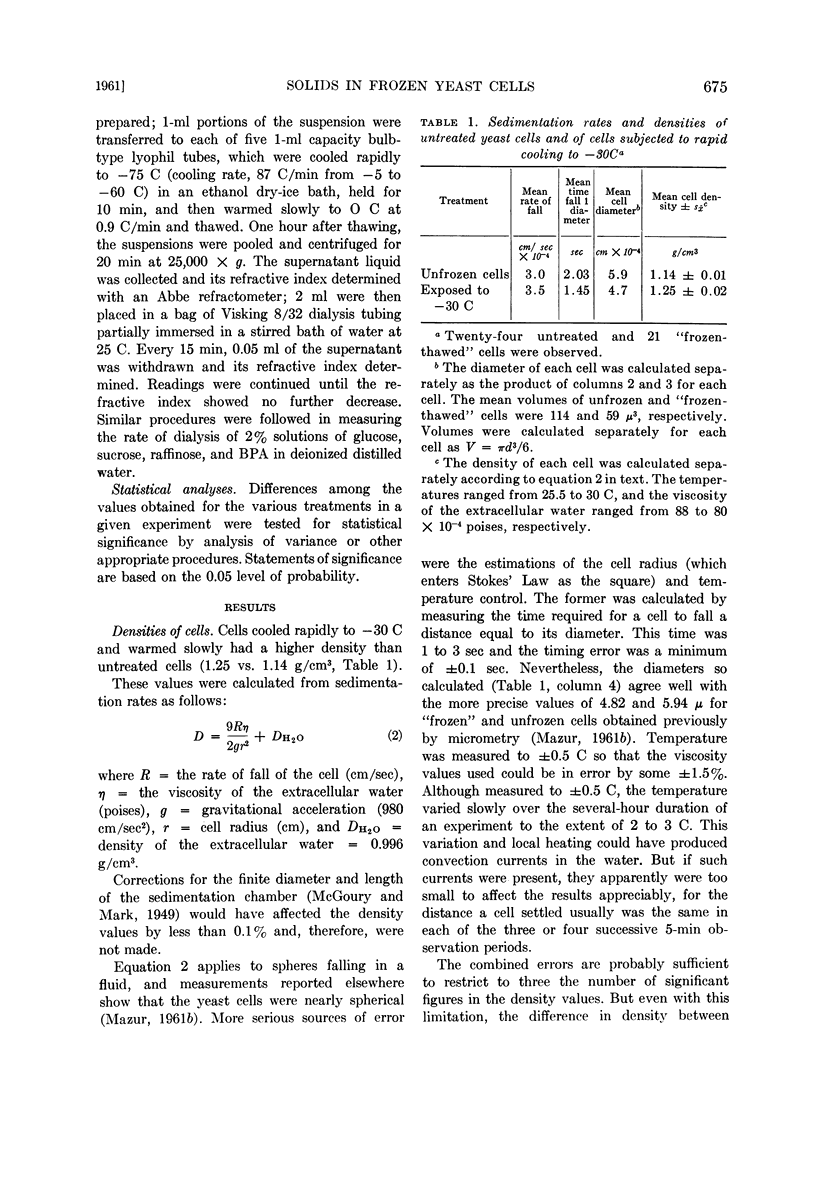
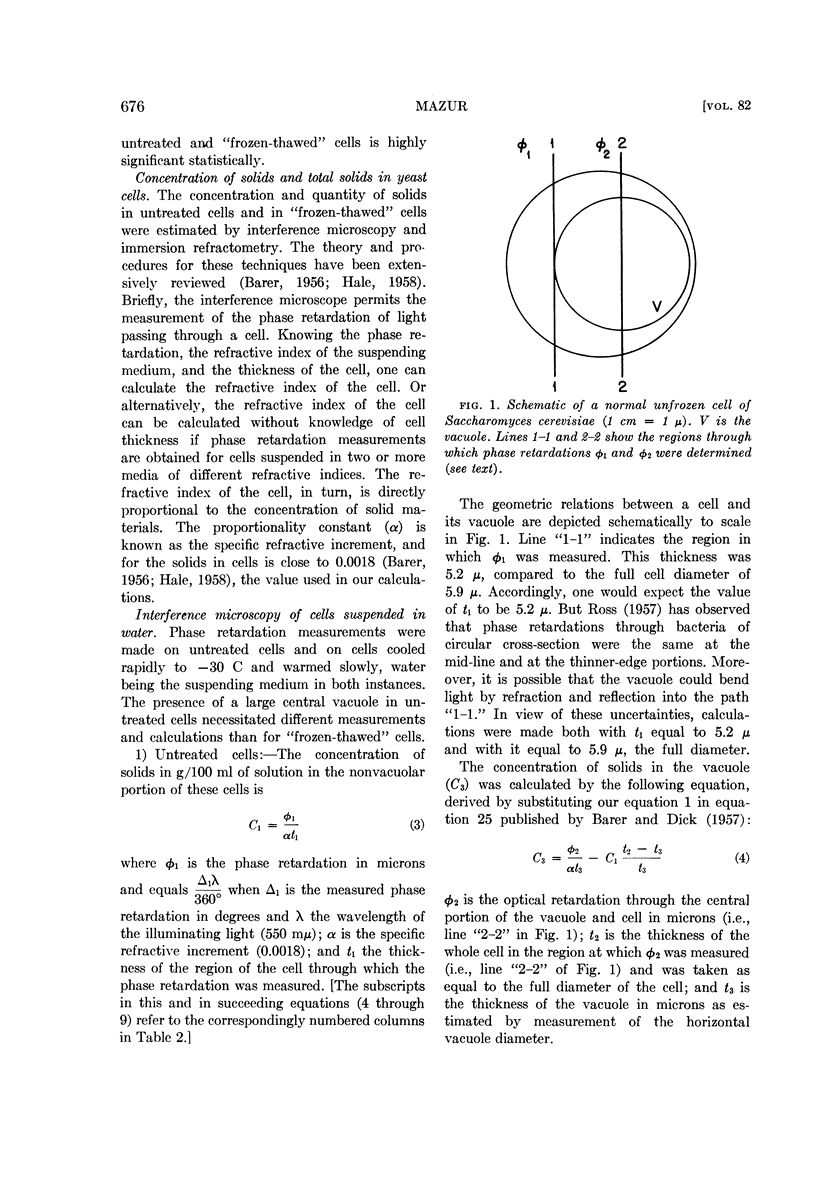
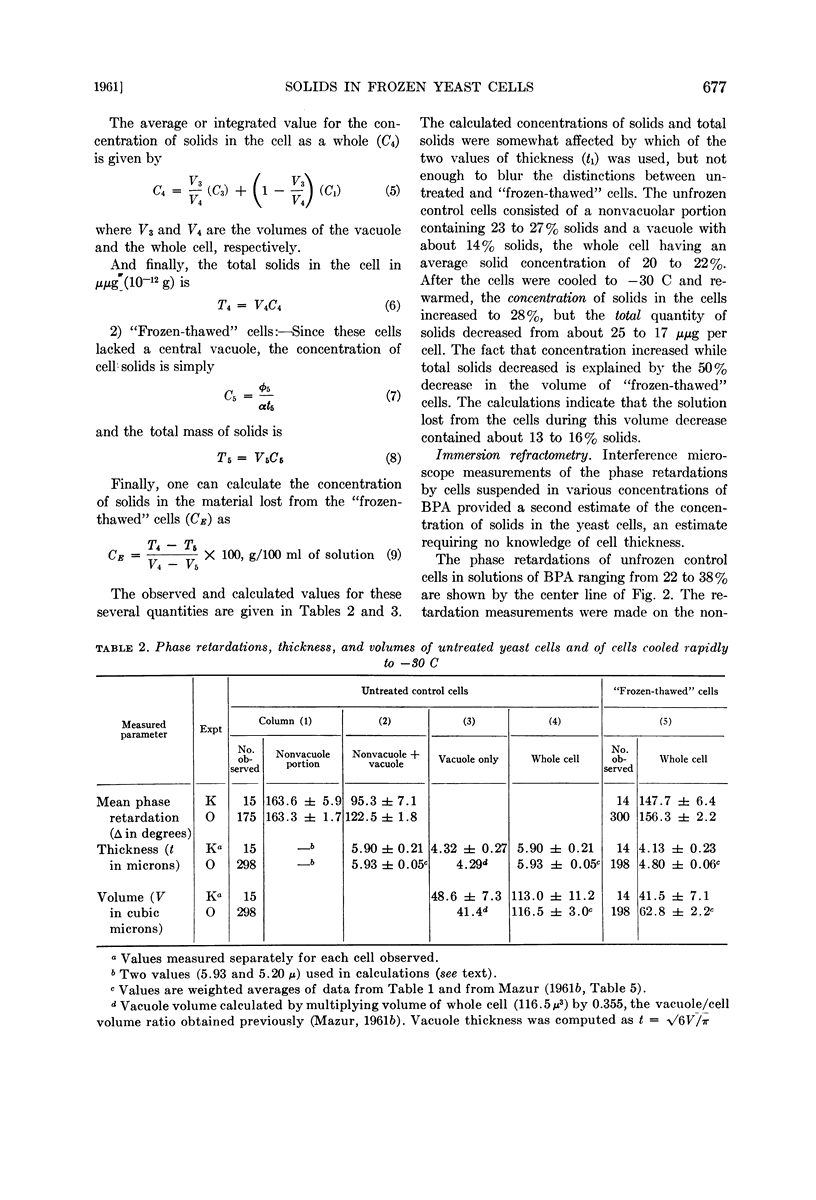
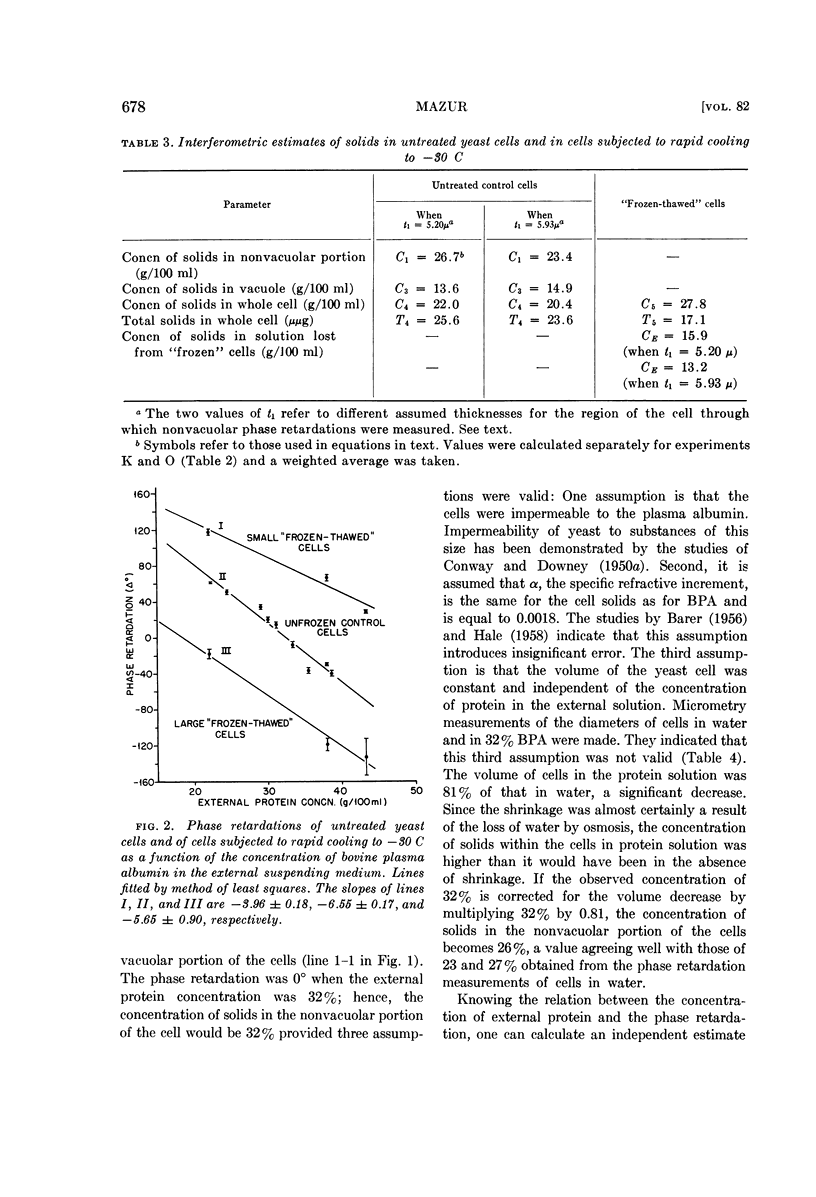

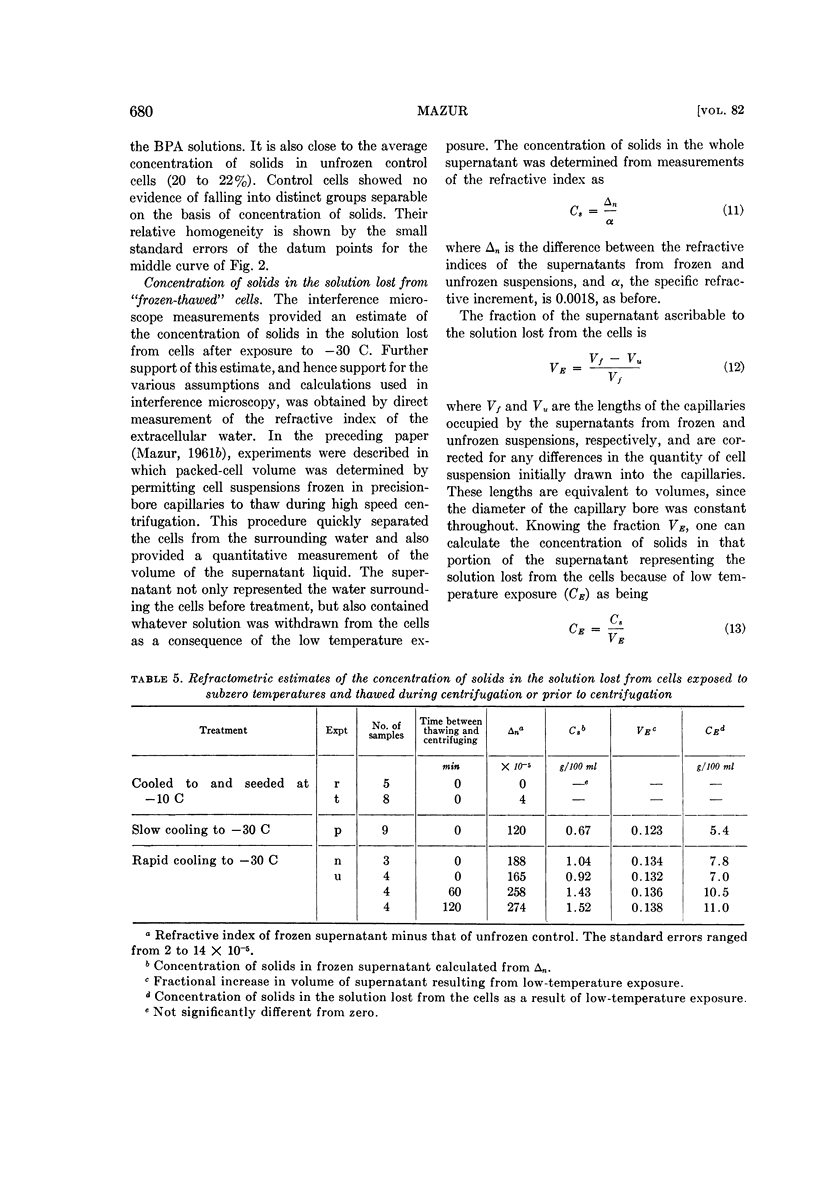
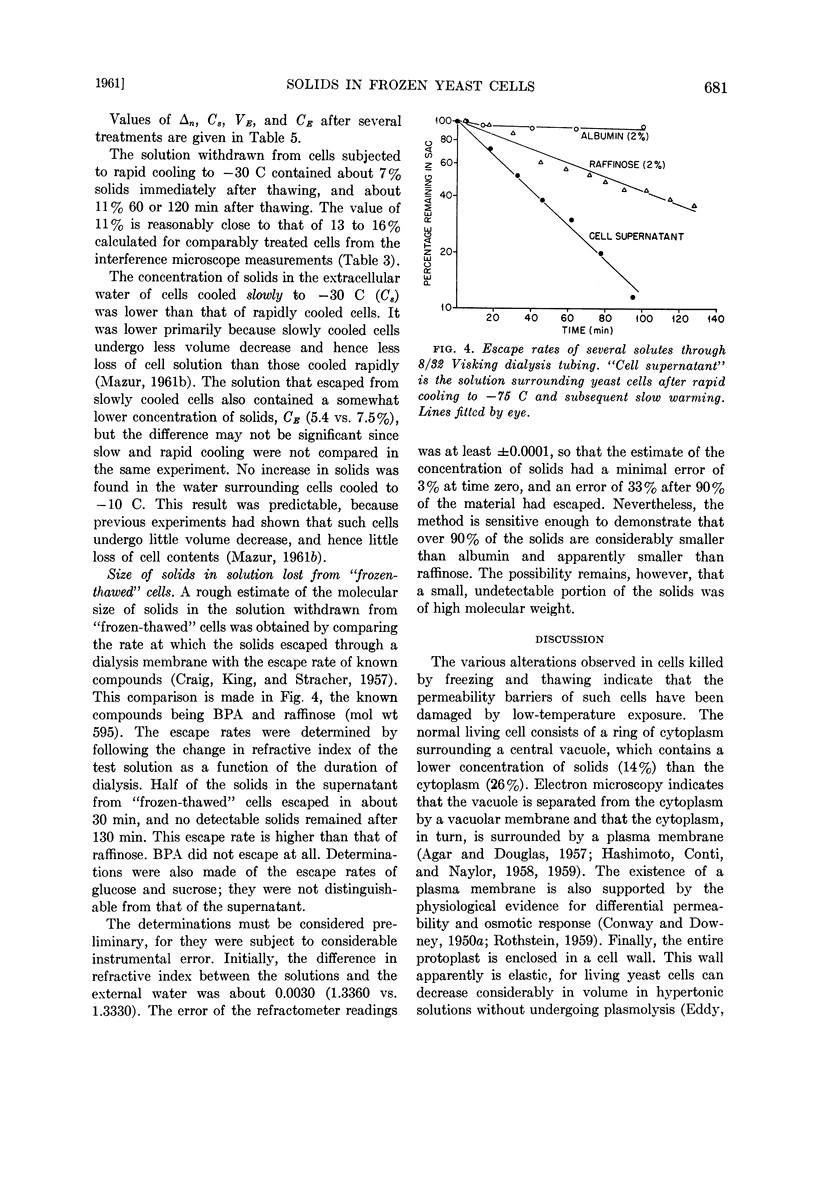

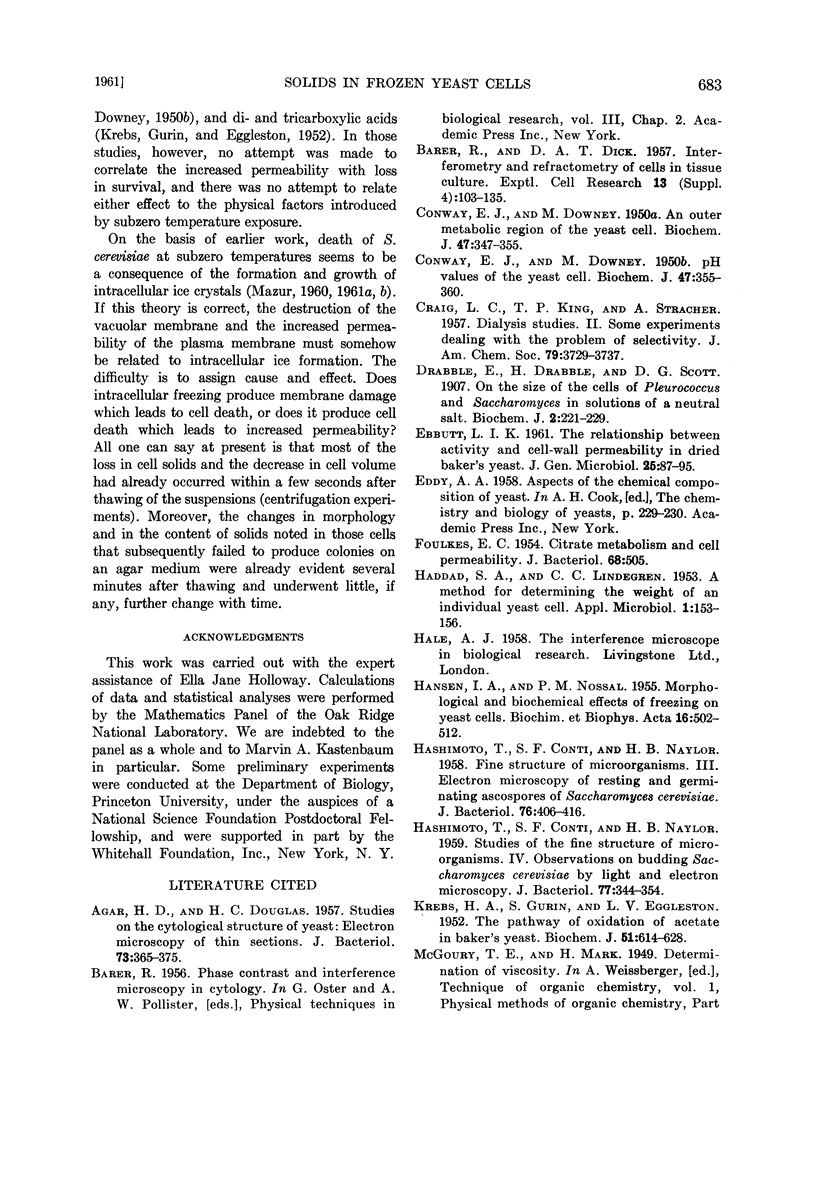

Selected References
These references are in PubMed. This may not be the complete list of references from this article.
- AGAR H. D., DOUGLAS H. C. Studies on the cytological structure of yeast: electron microscopy of thin sections. J Bacteriol. 1957 Mar;73(3):365–375. doi: 10.1128/jb.73.3.365-375.1957. [DOI] [PMC free article] [PubMed] [Google Scholar]
- BARER R., DICK D. A. Interferometry and refractometry of cells in tissue culture. Exp Cell Res. 1957;13(Suppl 4):103–135. [PubMed] [Google Scholar]
- CONWAY E. J., DOWNEY M. An outer metabolic region of the yeast cell. Biochem J. 1950 Sep;47(3):347–355. doi: 10.1042/bj0470347. [DOI] [PMC free article] [PubMed] [Google Scholar]
- CONWAY E. J., DOWNEY M. pH values of the yeast cell. Biochem J. 1950 Sep;47(3):355–360. doi: 10.1042/bj0470355. [DOI] [PMC free article] [PubMed] [Google Scholar]
- Drabble E., Drabble H., Scott D. G. On the Size of the Cells of Pleurococcus and Saccharomyces in Solutions of a Neutral Salt. Biochem J. 1907;2(5-6):221–229. doi: 10.1042/bj0020221. [DOI] [PMC free article] [PubMed] [Google Scholar]
- EBBUTT L. I. The relationship between activity and cell-wall permeability in dried baker's yeast. J Gen Microbiol. 1961 May;25:87–95. doi: 10.1099/00221287-25-1-87. [DOI] [PubMed] [Google Scholar]
- FOULKES E. C. Citrate metabolism and cell permeability. J Bacteriol. 1954 Oct;68(4):505–505. doi: 10.1128/jb.68.4.505-505.1954. [DOI] [PMC free article] [PubMed] [Google Scholar]
- HADDAD S. A., LINDEGREN C. C. A method for determining the weight of an individual yeast cell. Appl Microbiol. 1953 May;1(3):153–156. doi: 10.1128/am.1.3.153-156.1953. [DOI] [PMC free article] [PubMed] [Google Scholar]
- HANSEN I. A., NOSSAL P. M. Morphological and biochemical effects of freezing on yeast cells. Biochim Biophys Acta. 1955 Apr;16(4):502–512. doi: 10.1016/0006-3002(55)90270-5. [DOI] [PubMed] [Google Scholar]
- HASHIMOTO T., CONTI S. F., NAYLOR H. B. Fine structure of microorganisms. III. Electron microscopy of resting and germinating ascospores of Saccharomyces cerevisiae. J Bacteriol. 1958 Oct;76(4):406–416. doi: 10.1128/jb.76.4.406-416.1958. [DOI] [PMC free article] [PubMed] [Google Scholar]
- HASHIMOTO T., CONTI S. F., NAYLOR H. B. Studies of the fine structure of microorganisms. IV. Observations on budding Saccharomyces cerevisiae by light and electron microscopy. J Bacteriol. 1959 Mar;77(3):344–354. doi: 10.1128/jb.77.3.344-354.1959. [DOI] [PMC free article] [PubMed] [Google Scholar]
- KERBS H. A., GURIN S., EGGLESTON L. V. The pathway of oxidation of acetate in baker's yeast. Biochem J. 1952 Aug;51(5):614–628. doi: 10.1042/bj0510614. [DOI] [PMC free article] [PubMed] [Google Scholar]
- MAZUR P. Manifestations of injury in yeast cells exposed to subzero temperatures. I. Morphological changes in freeze-substituted and in "frozen-thawed" cells. J Bacteriol. 1961 Nov;82:662–672. doi: 10.1128/jb.82.5.662-672.1961. [DOI] [PMC free article] [PubMed] [Google Scholar]
- MAZUR P. Physical and temporal factors involved in the death of yeast at subzero temperatures. Biophys J. 1961 Jan;1:247–264. doi: 10.1016/s0006-3495(61)86887-2. [DOI] [PMC free article] [PubMed] [Google Scholar]
- MAZUR P. Physical factors implicated in the death of microorganisms at subzero temperatures. Ann N Y Acad Sci. 1960 Apr 13;85:610–629. doi: 10.1111/j.1749-6632.1960.tb49986.x. [DOI] [PubMed] [Google Scholar]
- ROTHSTEIN A. Role of the cell membrane in the metabolism of inorganic electrolytes by microorganisms. Bacteriol Rev. 1959 Dec;23(4):175–201. doi: 10.1128/br.23.4.175-201.1959. [DOI] [PMC free article] [PubMed] [Google Scholar]


